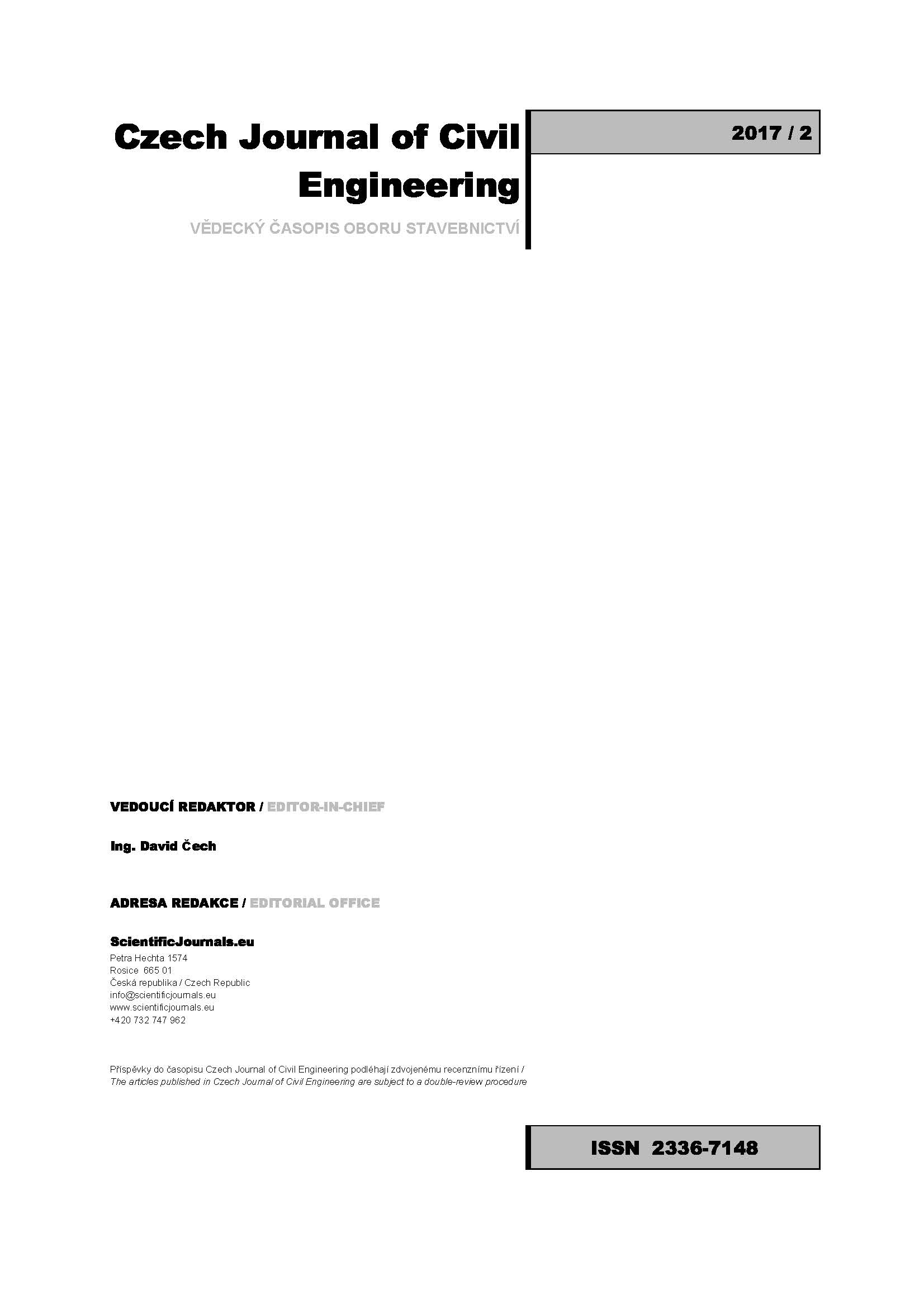DETECTING CHANGES IN TRENDS AND SCALING EXPONENTS OF SHORT TERM RAINFALL: CASE STUDY FOR THE ORAVSKÁ LESNÁ STATION
DOI:
https://doi.org/10.51704/cjce.2017.vol3.iss2.pp100-105Keywords:
Rainfall intensities, scaling exponents, Mann-Kendall trend testAbstract
The aim of this study was to test the rainfall trend and scaling exponent changes of different duration at the Oravská Lesná climatological station during the observation period 1964 to 2009. Trends of rainfall intensities were tested for the durations of 5, 10, 15, 30, 40, 50, 60, 120, 180, 240 and 1440 minutes from April till October and for the whole warm period. To analyze the significance of rainfall trends Mann-Kendall trend test (Kendall, 1975) was used. Trend analysis of the short-term rainfall was performed for 90% significance. In the next step, the simple scaling methodology was applied to derive scaling exponents and compared changes in their values in different observation periods. Finally, the impact of changes in trends on scaling exponents at the selected station in Slovakia was discussed.
Metrics
References
ADAMOWSKI, K., BOUGADIS, J. (2003). Detection of trends in annual extreme rainfall. Hydrological processes, 17, 3547-3560. doi: https://doi.org/10.1002/hyp.1353
BARA, M. - KOHNOVÁ, S. - GAÁL, L. - SZOLGAY, J. - HLAVČOVÁ, K. Škálovanie intenzít krátkodobých dažďov na Slovensku. 1. vyd. Ostrava: KEY Publishing, 2010. ISBN 978-80-7418-083-5. 74 s.
BARA, M. - ZECHELOVÁ, K. - KOHNOVÁ, S. - GAÁL, L. - SZOLGAY, J. - HLAVČOVÁ, K. Možnosti využitia metódy škálovania zrážok na lokálny a regionálny odhad návrhových intenzít krátkodobých dažďov. In Meteorological Journal. ISSN 1335-339X, 2011, vol. 14, no. 1, p. 25-32.
BERG P., MOSELEY C., and HAERTER J.O. (2013): Strong increase in convective precipitation in response to higher temperatures, Nature Geosci., doi: https://doi.org/10.1038/ngeo1731
KENDALL, M.G. (1975): Rank Correlation Methods. London: Griffin. 1975.
LÁTEČKOVÁ, J., KOHNOVÁ, S., GAÁL, L., SZOLGAY, J. (2011): Odvodenie škálovacích exponentov intenzít dažďov pre jednotlivé mesiace teplého polroku vo vybraných staniciach oblasti severovýchodného Slovenska. In Acta Hydrologica Slovaca. ISSN 1335-629, roč.12, Špeciálne číslo, s. 47-54.
MARIEN J. L., VANDEWIELE G. L., 1986: A point rainfall generator with internal storm structure. Water Resour. Res., 22, 4, 5231–5238. doi: https://doi.org/10.1029/WR022i004p00475
MENABDE, M., SEED, A. & PEGRAM, G. (1999). A simple scaling model for extreme rainfall. Water Resour. Res., 35(1), 335–339.
RODRIGUEZ-ITURBE I., GUPTA V. K., WAYMIRE E. C., 1984: Scale considerations in the modeling of temporal rainfall. Water Resour. Res., 20, 11, 1611–1619. doi: https://doi.org/10.1029/WR020i011p01611
ROMANO E., PREZIOSI E. (2013). Precipitation pattern analysis in the Tiber River basin (central Italy) using standardized indices. Int. J. Climatol., 33, 2013, 1781–1792. doi: https://doi.org/10.1002/joc.3549
SANTOS M., FRAGOSO M. (2013). Precipitation variability in Northern Portugal. Data homogenity assessment and trends in extreme precipitation indices. Atmospheric Research 131, 2013, 34-45. doi: https://doi.org/10.1016/j.atmosres.2013.04.008
SIVAPALAN M., WOOD E. F., 1987: A multidimensional model of nonstacionarity space-time rainfall at the catchment scale. Water Resour. Res., 23, 7, 1289–1299. doi: https://doi.org/10.1029/WR023i007p01289
VAES, G., WILLLEMS, P., BERLAMONT, J. (2002). 100 years of Belgian rainfall: are there trends? Water Science and Technology, 45, 55-61. doi: https://doi.org/10.2166/wst.2002.0027
VELPURI N. M.; SENAY G. B. (2013). Analysis of long-term trends (1950-2009) in precipitation, runoff and runoff coefficient in major urban watersheds in the United States. Environ. Res. Lett. 8, 2013, 024020, 6pp. doi: http://dx.doi.org/10.1088/1748-9326/8/2/024020
VENEZIANO D., BRAS R. L., NIEMANN J. D., 1996: Nonlinearity and self-similarity of rainfall in time and a stochastic model. Journal of Geophysical Res., 101, D21, 371–392. doi: https://doi.org/10.1029/96JD01658
YUE, S., KUNDZEWICZ, Z.W., WANG, L. (2012): Detection of Changes. Changes in Flood risk in Europe, Chap. 2, 11-26, 2012, IAHS special publication 10.
WAYMIRE E. C., GUPTA V. K., 1981: The mathematical structure of rainfall representation, 1, A review of stochastic rainfall models, 2, A review of the point processes theory, 3, Some applications of the point process theory to rainfall processes. Water Resour. Res., 17, 5, 1261–1294. doi: https://doi.org/10.1029/WR017I005P01261
WAYMIRE E. C., GUPTA V. K., RODRIGUEZ-ITURBE I., 1984: A spectral theory of rainfall intensity at the meso-β scale. Water Resour. Res., 20, 10, 1453–1465. doi: https://doi.org/10.1029/WR020i010p01453
Downloads
Published
How to Cite
Issue
Section
License
Copyright (c) 2023 Silvia Kohnová, Karolína Ochabová, Gabriel Földes, Kamila Hlavčová

This work is licensed under a Creative Commons Attribution-NonCommercial-NoDerivatives 4.0 International License.
Creative Commons Attribution-NonCommercial-NoDerivatives 4.0 International Public License
Articles published in Czech Journal of Civil Engineering are licensed using Creative Commons License. Except where otherwise noted, individual articles in the Czech Journal of Civil Engineering are licensed under a Creative Commons Attribution-NonCommercial-NoDerivatives 4.0 International (CC BY-NC-ND 4.0).









